Q
How to Calculate the Load Capacity of Jaecoo J7? Get Idea Here!
To calculate the load capacity of the Jaecoo J7, the primary method is to subtract the vehicle's curb weight (kerb mass) from its gross vehicle weight rating (GVWR) to determine the maximum permissible load. Typically, the Jaecoo J7 has a GVWR ranging from 2,200 to 2,500 kg, while its curb weight falls between 1,600 and 1,800 kg, resulting in a maximum payload capacity of approximately 400 to 700 kg. The exact figures should be verified against the official manual.
When calculating the load, ensure it includes the weight of passengers, luggage, and any additional accessories. Proper load distribution is advised to avoid overloading, which could compromise handling and braking performance. For frequent cargo transportation, compare the axle load limits and conduct dynamic balance checks to ensure driving safety.
Special Disclaimer: This content is published by users and does not represent the views or position of PCauto.
Related Q&A
Q
Does the Jaecoo J7 have memory seats?
As an SUV targeting the high - end market, the Jaecoo J7 is indeed equipped with a memory seat function. This configuration can store the preferred settings such as seat positions and rear - view mirror angles of different drivers, making it convenient for quick adjustment when multiple people take turns driving. It is especially suitable for family users or business scenarios. In Malaysia's hot weather, its comfort can be further enhanced when combined with the ventilated seat function.
Memory seats are usually linked with configurations such as electric adjustment and lumbar support, which is a common technology in luxury cars. High - end versions of competing models in the same class, such as the Honda CR - V and Toyota RAV4, also offer similar functions. It should be noted that there may be differences between different model years or configuration versions. It is recommended that consumers check the specific configuration list on the official Jaecoo Malaysia website before purchasing or visit an authorized dealer to experience the actual vehicle functions.
This kind of intelligent configuration is gradually being introduced from luxury cars to mainstream models, reflecting the digital development trend of the automotive industry. In the future, more advanced technologies such as facial recognition or remote preset via mobile apps may be integrated.
Q
What fuel does the Jaecoo J7 use?
As an SUV targeting young urban families, the Jaecoo J7 in the Malaysian market uses RON95 gasoline, which is the most common fuel type locally. It fully meets the infrastructure of Malaysian gas stations and driving needs. The 1.6TGDI turbocharged engine equipped in this model has been specifically tuned to fully leverage the anti - knock characteristics of RON95 gasoline. It not only ensures a power output of 156 horsepower but also takes fuel economy into account, making it very suitable for Malaysia's hilly terrain and congested urban roads.
It's worth mentioning that although RON97 gasoline can theoretically bring smoother combustion efficiency, considering the Malaysian government's continuous subsidy policy for RON95 and the limited difference in actual driving experience between the two, using RON95 is undoubtedly a more cost - effective choice. For Malaysian consumers who care about car - maintenance costs, regularly using the fuel additives recommended by the original manufacturer can effectively keep the fuel injectors clean. This kind of maintenance method is more cost - effective than blindly pursuing high - octane fuel.
In addition, Malaysia's hot and humid climate poses a challenge to the fuel system. It is recommended that car owners choose gas stations with a good reputation as much as possible to avoid poor - quality gasoline with excessive moisture content, which may affect the engine's lifespan.
Q
What is the towing capacity of the Jaecoo J7?
As an SUV designed mainly for urban light off - road driving, the towing capacity of the Jaecoo J7 needs to be evaluated in combination with its power and body structure. Although the official hasn't released the specific data yet, referring to SUV models in the same class equipped with 1.6T turbocharged engines (such as the Chery Tiggo series), it is estimated that its towing capacity is between 1,200 and 1,500 kilograms. It is suitable for towing leisure equipment like small yachts, camping trailers, or motorcycles.
For Malaysian users, it's necessary to pay attention to the local regulations regarding vehicle towing. For example, in Peninsular Malaysia, the total weight of the trailer must not exceed 1.1 times the unladen weight of the towing vehicle, and a special hitch and braking system need to be installed. If you often have towing needs, it is recommended to upgrade the cooling system and regularly check the transmission oil temperature, as the tropical climate may increase the engine load.
In addition, the J7's intelligent four - wheel drive system and high - rigidity body design can improve towing stability. However, in actual operation, sudden acceleration or overloading on steep slopes should still be avoided to ensure safety. The towing data of other brands like Proton X90 or Toyota Fortuner can also be used as a horizontal reference, but ultimately, the information on the Jaecoo Malaysia official website or from dealers should be the final reference.
Q
What is auto start stop on Jaecoo J7?
The Auto Start-Stop function of the Jaecoo J7 is an energy-saving technology. When the vehicle stops briefly (such as waiting at a red light or in a traffic jam), the system will automatically shut down the engine to reduce fuel consumption and emissions. When the driver releases the brake or steps on the accelerator, the engine will quickly restart to ensure a smooth drive. This function is particularly suitable for the common urban traffic congestion in Malaysia. It can not only reduce fuel consumption but also decrease exhaust emissions, which is in line with the environmental protection trend.
It should be noted that the Auto Start-Stop function will automatically pause when the battery is low, the air - conditioning is operating at a high load, or the engine has not reached the operating temperature, to ensure driving comfort and vehicle performance. Similar technologies have been widely used in many brand models and have become one of the important means for modern cars to improve fuel economy. Drivers can manually turn off this function through a button, but long - term use can significantly save fuel costs, especially in busy traffic areas like Kuala Lumpur.
Q
What is the safety rating of the Jaecoo J7?
The Jaecoo J7 has a good safety performance. It comes standard with a host of safety features. For example, ABS anti - lock braking system and electronic stability control can enhance the vehicle's stability during emergency braking and on complex road conditions. The seat - belt reminder covers all seats, constantly reminding passengers and drivers to fasten their seat belts. Functions such as blind - spot monitoring, lane departure warning system, autonomous emergency braking/active safety system, and forward collision warning are helpful in detecting potential hazards in advance and avoiding collisions. The vehicle is also equipped with eight airbags, including those for the driver, front - passenger, front - side airbags, head airbags (curtains) for the front and rear rows, and knee airbags. These can effectively protect the people inside the vehicle in the event of a collision. In addition, the ISOFIX child - seat anchor points make it easy to install child seats, ensuring the safety of children in the car. Although there is no specific star - rated safety rating, these abundant safety features can provide reliable safety protection for passengers and drivers.
Q
Is the Jaecoo J7 water resistant?
As an SUV mainly targeting urban light off - roading, the water - proof performance of the Jaecoo J7 is mainly manifested in daily wading scenarios rather than professional diving. Official data shows that its wading depth can reach approximately 600mm, which is sufficient to handle the common rain - flooded roads in Malaysia. This is due to its optimized air intake position and chassis sealing design. However, it should be noted that long - term immersion may still cause damage to the electrical circuits.
For Malaysian consumers, when driving during the rainy season, more attention should be paid to the vehicle's water - proof performance and daily maintenance. For example, regularly check the door seals and chassis drain holes to prevent sand and mud from clogging and affecting the water - proof effect. At the same time, it is recommended to check the braking system in time after wading.
It's worth noting that the water - proof design of most city SUVs on the market is mainly for short - term wading. If you often encounter deep - water areas, you should consider modifying professional configurations such as a wading snorkel. However, this will involve changes to the warranty terms, and it is recommended to consult through official channels.
Q
What cars are similar to the Jaecoo J7?
As a luxury compact SUV, the Jaecoo J7's comparable models can be those in the same class with similar design styles, power configurations, and technological features. For example, the Chery Omoda 5, Proton X50, Haval Jolion, and Toyota Corolla Cross. These models all feature youthful designs, have similar body sizes (around 4.4 - 4.5 meters in length), offer turbo - charged engine options (such as 1.5T or 1.6T), and are equipped with intelligent connectivity systems and ADAS driving assistance features, making them suitable for the urban roads in Malaysia and family needs.
It's worth noting that the Jaecoo J7 stands out in its class with its emphasized "luxury" interior quality and unique exterior design. The Proton X50 has an edge in cost - effectiveness thanks to its local production and well - established after - sales network, while the Toyota Corolla Cross excels in brand reputation and hybrid technology.
If consumers prefer a higher ground clearance or a four - wheel drive version, they can also compare the Mitsubishi ASX or Mazda CX - 30, but the price may go up. It is recommended to take a test drive before purchasing a car. Pay special attention to the space comfort and warranty terms, as the tropical climate in Malaysia places high demands on the air - conditioning efficiency and the stability of the electronic system.
Q
Is Jaecoo J7 a 4x4?
The Jaecoo J7 isn't all 4x4 (four - wheel drive) models. This vehicle comes in multiple drivetrain versions. Among them, the Jaecoo J7 AWD version features four - wheel drive (4x4), which offers better passability and handling stability, making it suitable for dealing with complex road conditions. The Jaecoo J7 2WD version is front - wheel drive, mainly providing the power needed for daily city driving and may have an edge in fuel economy. Additionally, the Jaecoo J7 PHEV 2WD version is also front - wheel drive. It's a plug - in hybrid model, achieving a balance between power performance and energy conservation as well as environmental protection. Consumers can choose the appropriate Jaecoo J7 drivetrain version based on their actual needs, driving scenarios, budget and other factors.
Q
How many seats are in the Jaecoo J7?
As a new luxury intelligent SUV model, the Jaecoo J7 features a standard 5 - seat layout for its seating configuration. This can meet the daily travel or long - distance trip needs of most Malaysian families. The rear seats usually support proportional folding to flexibly expand the luggage space.
In terms of design, this car focuses on seating comfort. The seat materials may offer options like leather or high - grade fabric. Some versions may also be equipped with electric adjustment or heating functions to enhance the experience. For Malaysian consumers, a 5 - seat SUV is particularly practical for urban commuting and weekend self - driving tours. It can ensure sufficient seating space while avoiding the higher road tax costs associated with 7 - seat models.
In the same market segment, the 5 - seat layout is the mainstream choice. Models like the Honda CR - V and Toyota RAV4 adopt similar designs. However, the Jaecoo J7 strengthens its competitiveness through intelligent configurations and a luxurious feel. For example, it may be equipped with an immersive audio system or a panoramic sunroof. These details are quite appealing to Malaysian users who value a sense of technology and comfort.
If consumers need more seats, they can consider other 7 - seat models or MPVs under the brand.
Q
What size battery is in the Jaecoo J7?
As a newly launched SUV model in the Malaysian market, the Jaecoo J7 typically uses a mainstream 12V battery system. Specifically, the capacity might be a lead - acid battery ranging from 60Ah to 70Ah (the specific parameters should be subject to the official manual or dealer information). This type of battery can meet the daily starting and power supply needs of electronic devices.
The climate in Malaysia is hot and humid. It is recommended that car owners regularly check whether the battery electrodes are corroded and avoid long - term parking which may lead to battery discharge, so as to extend the battery life. If considering an upgrade in the future, enhanced batteries such as AGM or EFB can be selected. They are more heat - resistant and have better cyclic charging performance, but it is necessary to confirm the compatibility with the vehicle's electrical system.
In addition, some maintenance centers in Malaysia offer free battery testing services. Car owners can take advantage of these services to ensure that the vehicle's power system is in good condition.
Latest Q&A
Q
How many people can fit in a Volvo XC40?
As a compact luxury SUV, the Volvo XC40 comes standard as a 5-seater model, which can comfortably accommodate 5 adults. Its seat design focuses on ergonomics, providing excellent support, making it suitable for daily use or long-distance travel of Malaysian families. The vehicle's body dimensions are 4425mm×1863mm×1652mm (length×width×height), with a wheelbase of 2702mm. The rear-seat legroom performs excellently among its peers. Moreover, the trunk has a capacity of 460 liters, which can be expanded to 1336 liters when the rear seats are folded down, meeting both the needs of seating and cargo-carrying.
It's worth noting that the XC40 uses Volvo's latest SPA platform, which is optimized in terms of both safety and space utilization. For example, it comes standard with 7 airbags and the City Safety system, making it especially suitable for Malaysia's rainy weather and complex road conditions. If you need more seats, you can consider 7-seater models like the Volvo XC60 or XC90. However, the XC40 is more suitable for the narrow roads in cities like Kuala Lumpur thanks to its flexible handling and compact body.
The Drive-E series engines installed in this car (such as the T4/T5 versions) have stable heat-dissipation performance in Malaysia's hot climate. Additionally, the maintenance network covers major cities, offering a relatively high level of convenience for vehicle maintenance.
Q
Is a used Volvo XC40 a good buy?
Buying a used Volvo XC40 in Malaysia is a great option, especially for consumers who value safety and Scandinavian design. The XC40 is well-known for its solid build quality, extensive safety features (such as the City Safety system), and comfortable driving experience. In the used car market, well-maintained models offer high cost-effectiveness.
In Malaysia, it is recommended to prioritize models produced after 2019. Earlier versions might lack some localized features. At the same time, it's crucial to check the maintenance records to ensure that the vehicle has been regularly serviced at authorized service centers, so as to avoid potential issues with the electronic system or turbocharged engine.
To expand a bit, the XC40's compact SUV positioning makes it very suitable for city roads in places like Kuala Lumpur. Its 2.0T power version performs stably in Malaysia's hot climate, though the fuel consumption is slightly higher than that of Japanese cars in the same class.
In addition, Volvo's used cars in Malaysia have a relatively lower resale value compared to their German competitors. This actually provides a more attractive purchase price for used car buyers. However, it's necessary to be aware that the parts supply cycle might be longer.
Overall, as long as you conduct a thorough vehicle condition check and are willing to accept slightly higher maintenance costs, a used XC40 can offer a unique driving experience that surpasses that of ordinary Japanese cars.
Q
How to turn brightness up on Volvo XC40?
Adjusting the screen brightness on the Volvo XC40 is a breeze. First, start the vehicle. Then, find the settings menu on the center console and enter the "Display" or "Screen Settings" option. Inside, you'll find a brightness adjustment slider. You can slide it to adjust the screen to a suitable brightness level. Some models also support automatic brightness adjustment, which can automatically adjust the screen brightness according to the ambient light.
In addition, if you find the screen too bright when driving at night, you can enable the "Night Mode" in the settings to reduce eye strain. For users in Malaysia, due to the hot climate and strong sunlight there, it's recommended to increase the brightness during the day to ensure clear visibility. Meanwhile, be careful not to use high brightness for a long time to reduce screen power consumption.
The display design of the Volvo XC40 takes user experience into account. Adjusting the brightness is just one of its many convenient features. You can also explore other settings such as theme colors or font sizes to personalize your driving experience.
Q
What is the difference between Volvo XC60 and XC40?
The Volvo XC60 and XC40 are two SUVs with different positioning. The main differences lie in size, space, and powertrain configuration. The XC60 belongs to the mid-sized SUV category. It has a larger body, offering more spacious seating and luggage space, which makes it suitable for family users. On the other hand, the XC40 is a compact SUV, more suitable for city driving and for single people or small families.
In terms of power, the XC60 usually comes with more powerful engine options, including plug-in hybrid versions. The XC40, however, offers more economical powertrain choices, such as a 1.5-liter three-cylinder turbocharged engine. Some models also have plug-in hybrid versions.
Both cars inherit Volvo's safety and technology features, such as the City Safety urban safety system and the Pilot Assist autonomous driving assistance function. But the XC60 may offer more luxury features on its high - end models, like air suspension and high-end audio systems.
For Malaysian consumers, the XC40 is more suitable for congested city roads due to its compact size, while the XC60 is ideal for users who need more space and comfort for long-distance driving. Moreover, Volvo has a well-established after-sales service network in Malaysia, and both models can enjoy the brand's high-standard warranty and maintenance services.
Q
How long does it take to fully charge a Volvo XC40?
The charging time of the Volvo XC40 depends on the charging equipment used and the battery capacity. Taking the common charging conditions in Malaysia as an example, if you use an 11kW AC charging pile, it takes about 7 to 8 hours to fully charge the battery. However, using a 50kW DC fast-charging pile can charge the battery from 10% to 80% in about 40 minutes. It should be noted that the charging speed is affected by factors such as battery temperature, current battery level, and the power of the charging pile. For Malaysian users, it is recommended to give priority to DC fast-charging to save time, especially during long-distance trips. At the same time, you should also avoid frequent use of fast-charging to extend the battery life.
In addition, the charging infrastructure in Malaysia is gradually improving. You can find charging piles in major shopping malls and highway service areas. Car owners can check the locations and real-time status of nearby charging stations through the official Volvo APP or third-party platforms, which is convenient for trip planning. In daily use, it is recommended to keep the battery level between 20% and 80%. This can not only meet your travel needs but also contribute to the battery's health.
View MoreRelated News
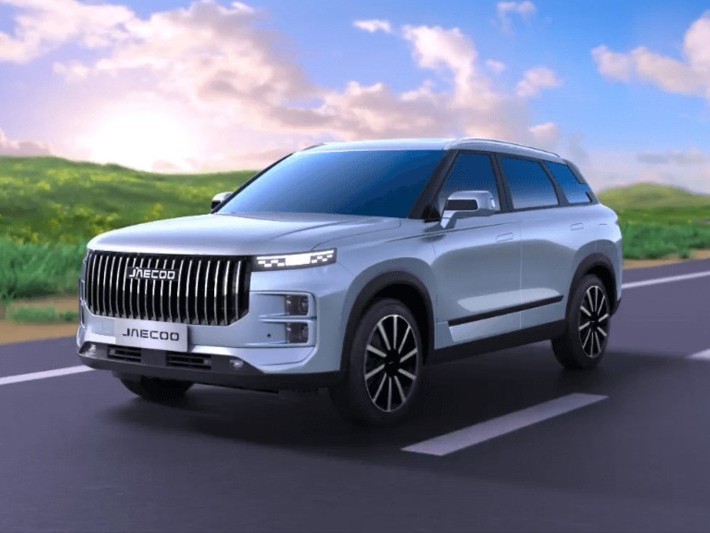
Jaecoo J7 Review: A Great-Value SUV That Delivers More Than Expected
AshleyJul 10, 2025
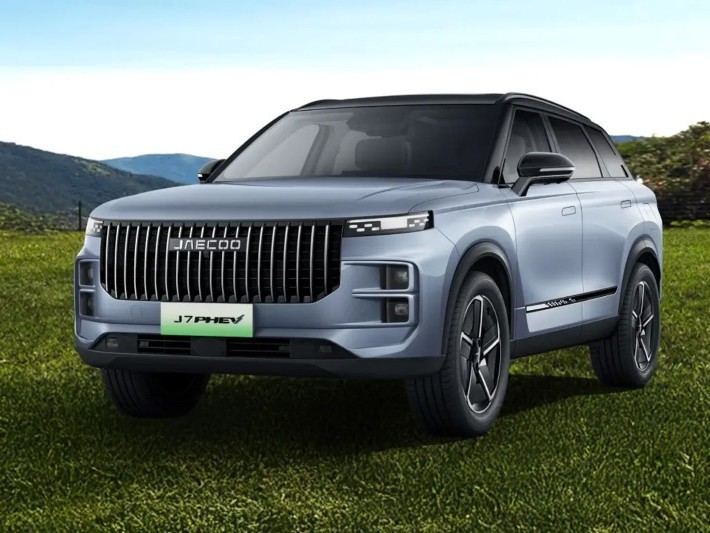
Jaecoo J7 Interior Design Unveiled: A Cabin Full of Luxury and Tech Vibes
LienJul 1, 2025

Jaecoo J7 Buyer's Guide: Models, Price & Best Pick for You!
RobertJun 10, 2025
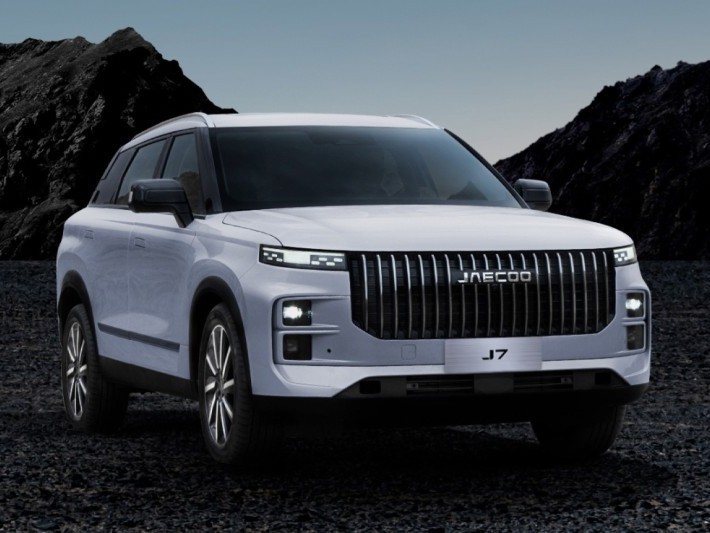
How Much Thought Went Into It? A Deep Dive Into Jaecoo J7's Design Details
MichaelApr 11, 2025
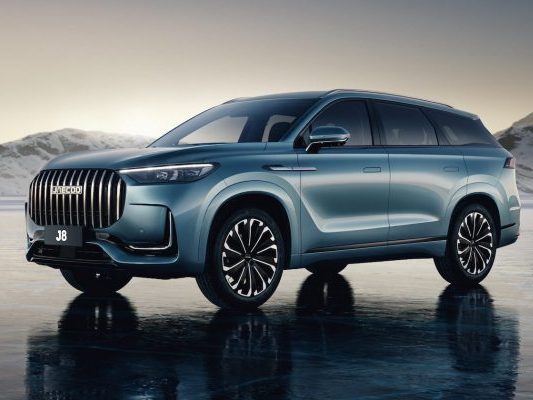
Jaecoo J8 Unveiled: Will It Continue the Glory of Jaecoo J7?
LienMar 28, 2025
View More











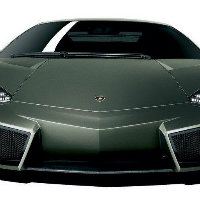
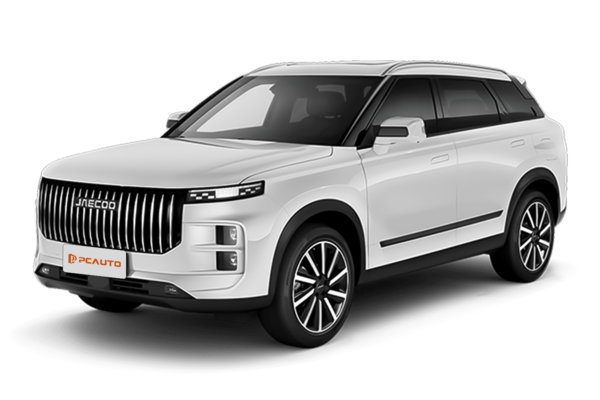
 Cars
Cars



Pros
Cons